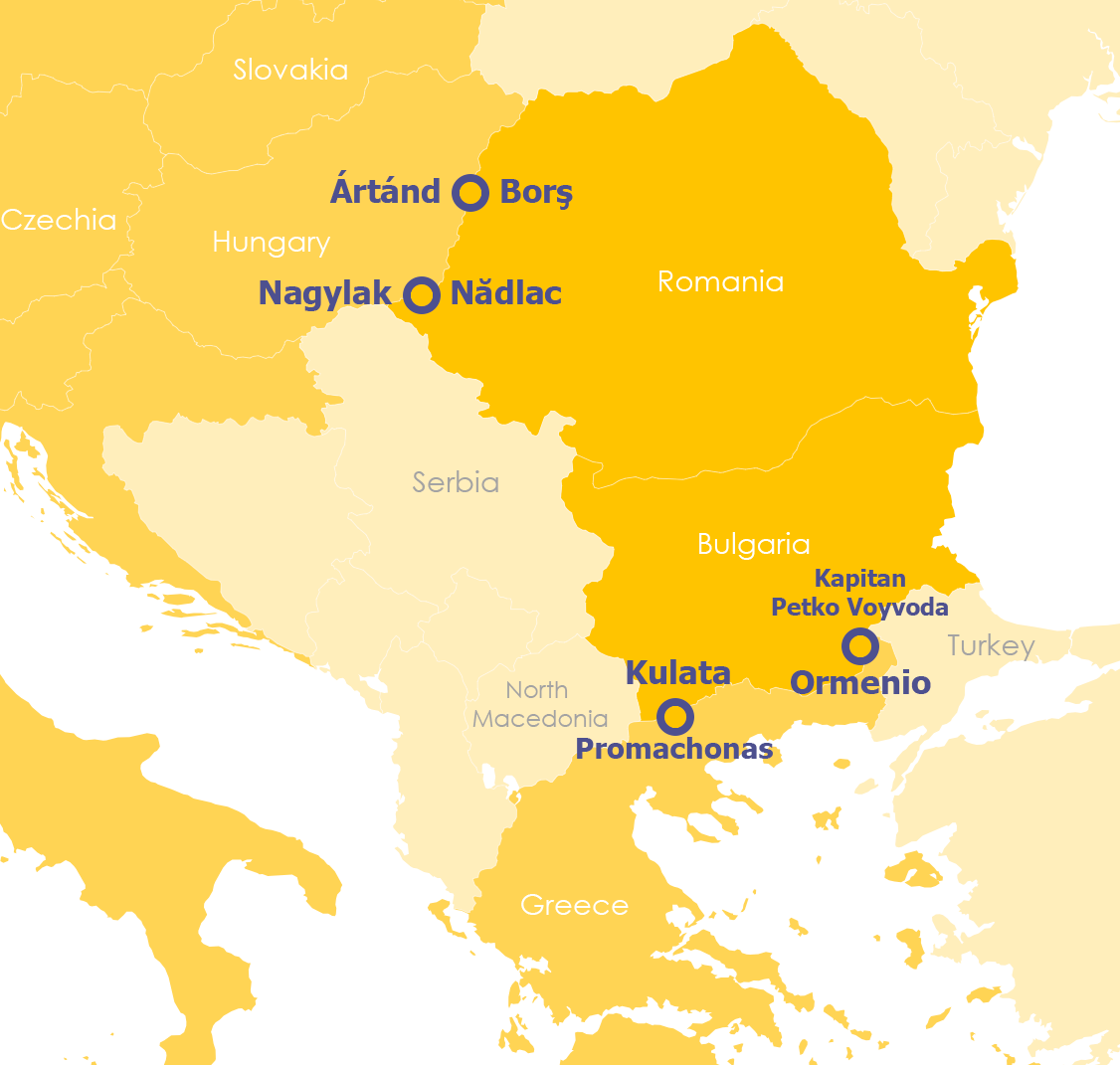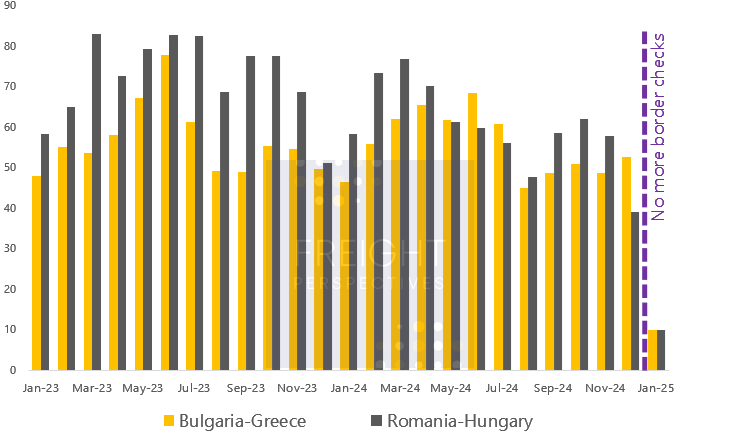Smoother Driving in Southeastern Europe with fewer Border Controls in 2025
Market Monday - Week 5: Romania and Bulgaria's Full Schengen Membership Opens New Opportunities
The long and convoluted process for Romania and Bulgaria finally came to an end in January 2025 when last obstacles were overcome and both countries gained full Schengen membership, including the removal of land border controls with the rest of the Schengen area. This achievement represented an important milestone for the European Union, demonstrating ongoing integration efforts and is expected to bring significant economic and social benefits.
Figure 1. Key truck traffic border crossings between Romania, Bulgaria and other Schengen member states
Crossing the Bulgarian-Greek and especially the Hungarian-Romanian borders has historically been challenging for trucks. Drivers faced significant delays that led to increased fuel consumption, vehicle wear and tear from slow-crawling traffic, unnecessary stress, and costly downtime. The elimination of these delays will reduce both direct and indirect operational expenses for carriers and forwarders.
Data, available on Transporeon Real-Time Visibility Platform provides insight into actual waiting times over the last couple of years. As shown on figure 2, monthly median waiting times for trucks at Romanian and Bulgarian borders during 2023-2024 ranged from 35 to 85 minutes, with most delay events falling between 20 and 200 minutes. There were also occasions of 6+ hour queues recorded, mostly during peak days on the route to Hungary. While occasional checks may still occur under existing and future border control measures, nearly all delays have been eliminated since the beginning of 2025.
Figure 2. Median monthly truck waiting times on border crossings with Schengen members in 2023-2024. Data source: Transporeon
Efficient border crossings reduce transit times and costs for cross-border transportation, creating a win-win situation for both shippers, carriers and consumers. For the general market this means more capacity will be available in the nearby regions, as carriers become more willing to engage in cross-border transport. More efficient border movements and increased driving time will enable more trips during the same period. Despite the clear benefits and savings, we doubt that spot and contracted market prices will fully reflect these changes in the short term. Price reductions are more likely to come from increased capacity and competition rather than direct savings from Bulgaria and Romania's Schengen Membership. The most significant impact will be on shorter-distance routes between Romania and Hungary, where border checks previously caused the longest delays - these routes should see faster price adjustments.
The bottom line? The full inclusion of Bulgaria and Romania into the Schengen Area is set to bring about significant operational cost reductions and time savings for road heavy truck transportation in the Southeastern Europe region. Most notably, Greece's first land connection to the Schengen Area opens new possibilities for faster and more reliable North-South European freight flows. These developments highlight the importance of continued integration and cooperation efforts within the European Union, improving the efficiency and competitiveness of the road and intermodal logistics sector.
Oleksandr Kulish
Consultant
Transporeon




